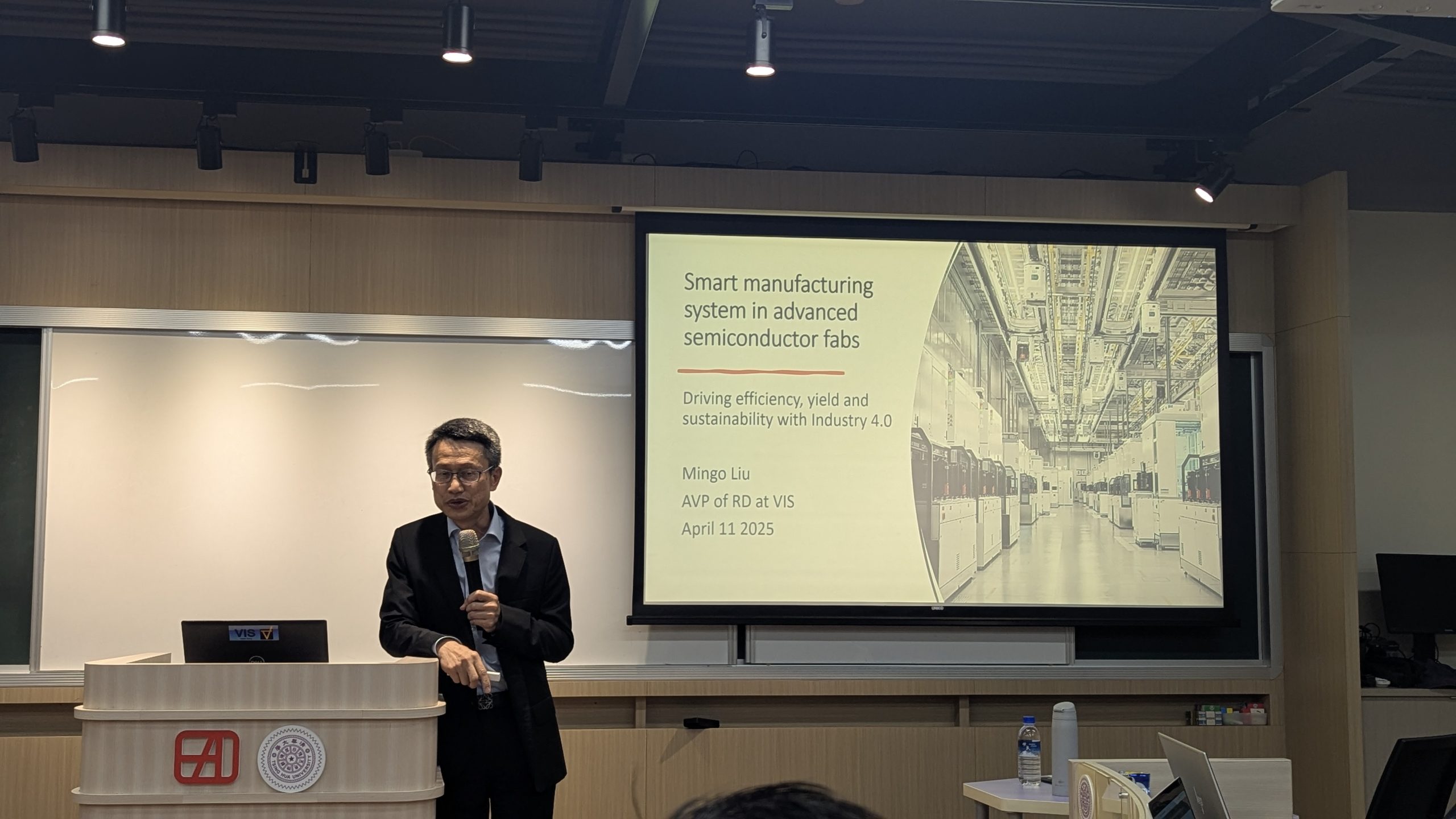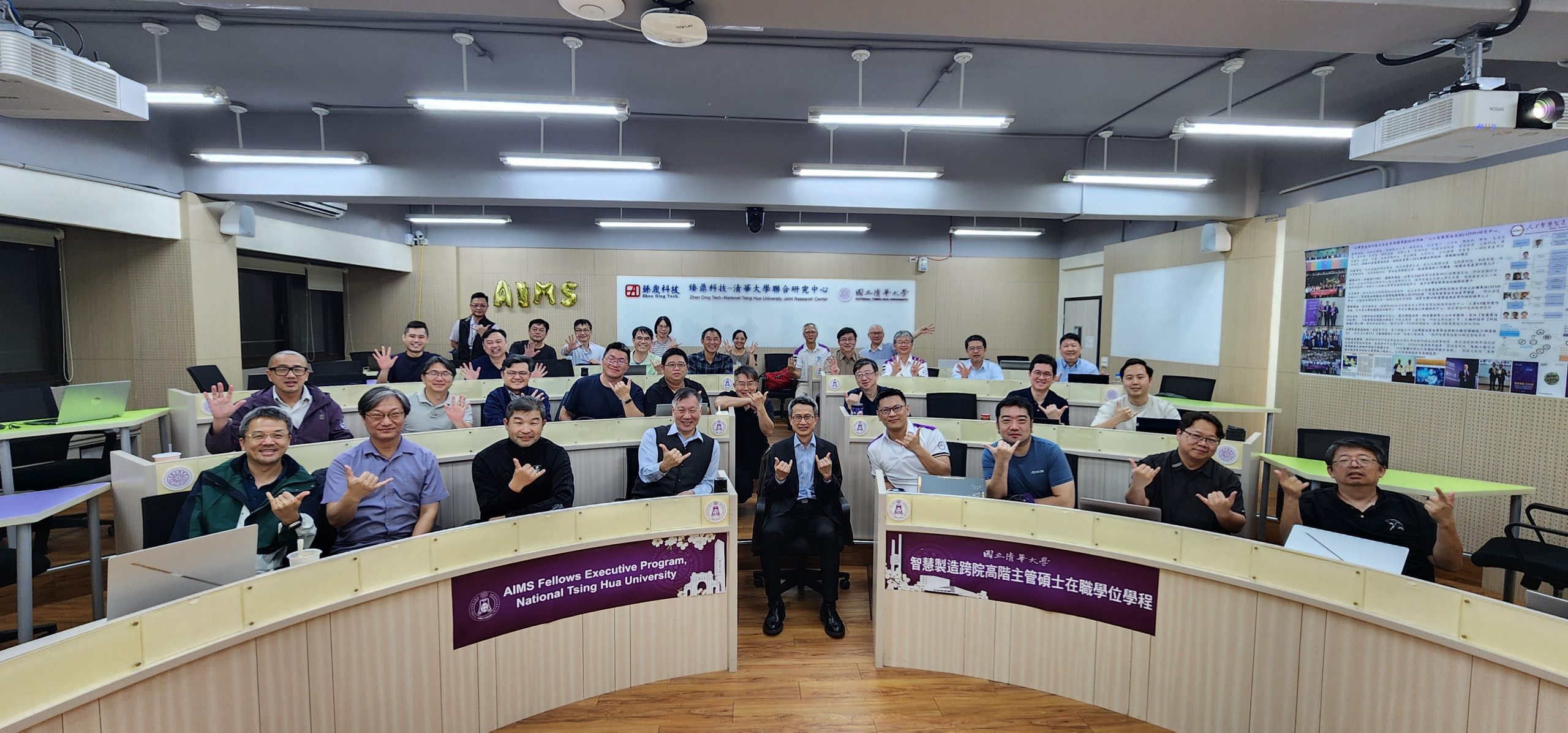Yesterday at National Tsing Hua University, we had the privilege of attending a masterclass in strategic thinking, innovation, and automation. The speaker? Mr. Liu Chun-Ming, Vice President of Vanguard International Semiconductor, and a former veteran of TSMC.
It was more than just a keynote—it felt like a guided tour through the inner workings of one of the world’s most advanced manufacturing ecosystems. From big data and predictive maintenance to AI integration and talent culture, Mr. Liu’s lecture delivered not just facts, but frameworks that make Taiwan’s semiconductor leadership possible.
🧠 The Lecture Theme: Decision Analysis in Smart Manufacturing
Mr. Liu opened with the context of joining TSMC in 1988—when the company had only 150 people. Over the decades, he witnessed and participated in its transformation into a global manufacturing juggernaut.
The core of his talk revolved around how decision analysis plays a key role in smart manufacturing. As processes became more complex, the ability to make timely, data-driven decisions became a competitive differentiator. This involves not only analytics, but a shift in mindset: from reacting to problems, to predicting them.
🔑 TSMC’s 3 Pillars of Success
Liu summarized TSMC’s rise using what he called “the three pillars of success,” derived from founder Morris Chang’s leadership philosophy:
1️⃣ Technology Leadership
TSMC’s relentless pursuit of process innovation is legendary—from the 90nm era to the current 3nm and beyond. Liu described how R&D teams work in parallel across multiple nodes (N2, N3, N1.4), often managing over 85 photomask layers in a single flow. This demands precision, coordination, and courage to take calculated risks.
2️⃣ Multiculture Excellence
With thousands of engineers from all over the world, TSMC built not just a team, but a shared mindset. The company invests heavily in onboarding, mentorship, and multilingual communication frameworks to ensure every team can align toward common goals.
3️⃣ Customer Relationship
TSMC’s customer service goes beyond delivery timelines. It’s about co-developing solutions, adapting processes for specific chip architectures, and ensuring the “first silicon” meets stringent yield and performance expectations. Liu cited negotiations where prices were fixed upfront—but where execution excellence still defined the outcome.
⚙️ From Manual to Smart: The Rise of TSMC’s Intelligent Factories
Liu detailed how factory operations evolved—from early days of clipboard-based logging to sensor-rich, fully connected production environments.
He described motion-triggered lighting systems, real-time data platforms like FDC and OAS, and in-house equipment development (yes, TSMC even designs its own measurement tools). In the 1990s, their “mini-mini” control system transformed how small lots were handled—laying the groundwork for current AI-powered monitoring.
What’s remarkable is how TSMC didn’t wait for the market to offer solutions—they built internal platforms, customized analytics tools, and integrated them with frontline operations long before “Industry 4.0” was a buzzword.
💡 AI + Automation: Beyond Buzzwords
“AI isn’t about cutting labor,” Liu emphasized. “It’s about optimizing time, focus, and decision scope.”
TSMC leverages AI for predictive maintenance, production planning, yield improvement, and even security. From edge computing systems to cloud-based defect analysis, the goal is to make the system smarter—not just faster.
He also pointed out that TSMC engineers now participate in coding competitions—building scripts that reduce production tasks from hours to minutes. Winners walk away with high-end GPUs, but the real reward is cultural: a sense of ownership and pride in pushing boundaries.
📈 Lessons for the Broader Industry: A Note from Kuma Technology
At Kuma Technology, we found Liu’s perspective deeply resonant.
We may not yet operate at TSMC’s scale, but we share the same vision: to integrate automation, optimize processes, and empower engineers with the tools they need. From CNC machining to production traceability, our mission is to bring smart manufacturing to small and mid-sized manufacturers who need agility just as much as scale.
Liu’s final warning stuck with us: “When Moore’s Law slows, survival will depend not on who’s fastest—but on who adapts best.”
At Kuma, we’re adapting—learning, applying, and scaling every insight we can.
🧾 Key Takeaways
✔️ TSMC’s success is built on technology, culture, and client trust—not shortcuts.
✔️ Smart factories start with smart decisions, not just smart machines.
✔️ AI must be embedded in culture—not just installed in code.
✔️ Digital transformation is a long-term strategy, not a quick fix.
#SmartManufacturing #TSMC #KumaTechnology #Automation #DecisionScience #AIinIndustry #DigitalFactory #MooresLaw #SemiconductorLeadership #TSMCLessons #ManufacturingInnovation



No responses yet